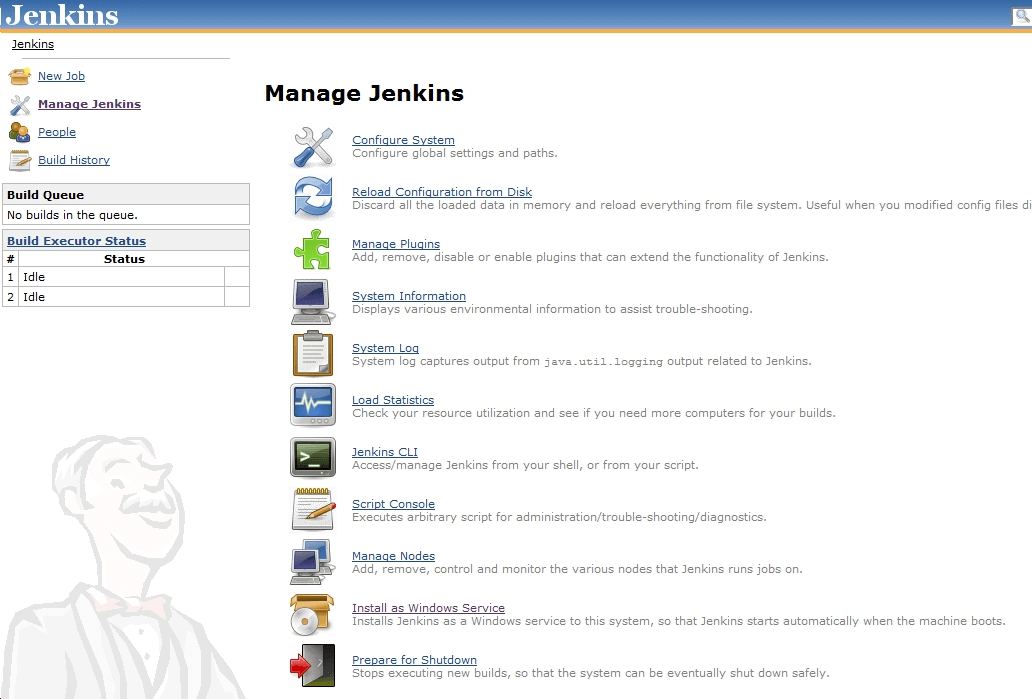Blog
21 BEST Email Apps for iPhone in 2021
An email app for iPhone enables you to configure email addresses to receive, read, compose, and...
Jenkins is an open source Continuous Integration server capable of orchestrating a chain of actions that help to achieve the Continuous Integration process (and not only) in an automated fashion.
Jenkins is free and is entirely written in Java. Jenkins is a widely used application around the world that has around 300k installations and growing day by day.
It is a server-based application and requires a web server like Apache Tomcat. The reason Jenkins became so popular is that of its monitoring of repeated tasks which arise during the development of a project. For example, if your team is developing a project, Jenkins will continuously test your project builds and show you the errors in early stages of your development.
By using Jenkins, software companies can accelerate their software development process, as Jenkins can automate build and test at a rapid rate. Jenkins supports the complete development lifecycle of software from building, testing, documenting the software, deploying and other stages of a software development lifecycle.
In this tutorial, you will learn
In Continuous Integration after a code commit, the software is built and tested immediately. In a large project with many developers, commits are made many times during a day. With each commit code is built and tested. If the test is passed, build is tested for deployment. If deployment is a success, the code is pushed to production. This commit, build, test, and deploy is a continuous process and hence the name continuous integration/deployment.
A Continuous Integration Pipeline is a powerful instrument that consists of a set of tools designed to host, monitor, compile and test code, or code changes, like:
Some people might think that the old-fashioned way of developing the software is the better way. Let's understand the advantages of CI with Jenkins with the following example
Let us imagine, that there are around 10 developers who are working on a shared repository. Some developer completes their task in 25 days while others take 30 days to complete.
| Before Jenkins | After Jenkins |
|---|---|
| Once all Developers had completed their assigned coding tasks, they used to commit their code all at same time. Later, Build is tested and deployed. Code commit built, and test cycle was very infrequent, and a single build was done after many days. | The code is built and test as soon as Developer commits code. Jenkin will build and test code many times during the day If the build is successful, then Jenkins will deploy the source into the test server and notifies the deployment team. If the build fails, then Jenkins will notify the errors to the developer team. |
| Since the code was built all at once, some developers would need to wait until other developers finish coding to check their build | The code is built immediately after any of the Developer commits. |
| It is not an easy task to isolate, detect, and fix errors for multiple commits. | Since the code is built after each commit of a single developer, it's easy to detect whose code caused the built to fail |
| Code build and test process are entirely manual, so there are a lot of chances for failure. | Automated build and test process saving timing and reducing defects. |
| The code is deployed once all the errors are fixed and tested. | The code is deployed after every successful build and test. |
| Development Cycle is slow | The development cycle is fast. New features are more readily available to users. Increases profits. |
I am sure all of you aware of old phone Nokia. Nokia used to implement a procedure called nightly build. After multiple commits from diverse developers during the day, the software built every night. Since the software was built only once in a day, it's a huge pain to isolate, identify, and fix the errors in a large code base.
Later, they adopted Continuous Integration approach. The software was built and tested as soon as a developer committed code. If any error is detected, the respective developer can quickly fix the defect.
By default, Jenkins comes with a limited set of features. If you want to integrate your Jenkins installation with version control tools like Git, then you need to install plugins related to Git. In fact, for integration with tools like Maven, Amazon EC2, you need to install respective plugins in your Jenkins. 
Though Jenkins is a very powerful tool, it has its flaws.
An email app for iPhone enables you to configure email addresses to receive, read, compose, and...
Duplicate file finders are tools that help you to find and remove repeating files in folders and...
What is crontab? Cron is named after Greek word "Chronos" that is used for time. It is a system...
What is Kubernetes? Kubernetes is an open-source container management software developed in the...
Chromecast is a dongle like device for your television, connecting to the TV's HDMI port to add...
What is Software Engineering? Software engineering is a process of analysing user requirements and then...